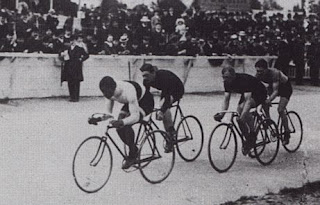Sustaining two oppositions and granting two petitions for cancellation, the Board found Defendant's marks
GIANNI VALENTINO and
GIOVANNI VALENTINO likely to cause confusion with the common law marks
VALENTINO and
VALENTINO GARAVANI, for clothing and handbags. The Board's 48-page decision puts a rather unfashionable end to this 16-year old TTABrouhaha.
Valentino U.S.A., Inc. v. Florence Fashions (Jersey) Limited, Opposition Nos. 91094961 and 91095203, Cancellation Nos. 92029390 and 92029476 (June 25, 2010) [not precedential].
 Valentino GaravaniSurname?:
Valentino GaravaniSurname?: Defendants argued that
VALENTINO is a common surname, and thus that the asserted marks "are primarily merely a surname [
sic] and lack distinctiveness." First, the Board observed that VALENTINO GARAVANI is a personal name, not a surname. Second, as to VALENTINO, "by virtue of exposure to a known designer with the first name of VALENTINO, it is, at a minimum, not
primarily merely a surname." In any event, even if VALENTINO is primarily merely a surname, the record established acquired distinctiveness from a date prior to Defendant's constructive first use date.
Priority: Defendant was entitled to rely on the filing date of the pending ITU applications and the underlying ITU applications for the registrations: July 25, 1991. Its attempt to prove a 1997 first use date was "far from clear and convincing."
Plaintiff, the licensee rather than the owner of the pleaded marks, established priority through the testimony of a single witness. All documentary evidence regarding prior sales and advertising was lost in 2002.
Notwithstanding the limitations of plaintiff’s evidence, the inescapable conclusion from the testimony, the magazine advertisements over three decades, and books dedicated to a designer and his fashions, is that plaintiff’s predecessor began selling clothing under the VALENTINO mark sometime in the 1960’s and later extended its line to bags, footwear and accessory items; it is simply not reasonable to conclude that a company continued to advertise in nationally distributed magazines for decades and entered into a consent to use agreement despite making no sales.
Viewing the record as a whole, the Board found that Plaintiff's predecessor-in-interest began using VALENTINO on clothing as early as 1970 and on handbags as early as 1983; and VALENTINO GARAVANI on clothing as early as 1989 and on handbags as early as 1990.
Fame: To prove fame, plaintiff was required to establish the fame of its marks as of the closing of trial. In any case, it failed to prove fame at any time due to its scanty proof of sales and advertising.
The Goods: The Board found that some of the goods in each class of the challenged applications and registrations are identical or otherwise related with those of Plaintiff, and that the parties' channels of trade and customers overlap.
The Marks: Plaintiff's namesake is repeatedly referred to as VALENTINO, and therefore "consumers not familiar with Valentino Garavani's full name would likely believe Giovanni Valentino is referring to Valentino, not knowing his full name is Valentino Garavani." The similarity arising from the name Valentino "has particular weight in the clothing and accessories industry where it is common for designers to shorten their name marks."
The Board concluded that the marks involved are similar in sound, appearance, connotation, and commercial impression.
Other Valentinos: Defendant pointed to other uses of the word VALENTINO in connection with these same goods, but the Board found the evidence insufficient to show that the public has learned to distinguish between and among these various designers. "Although we have given some weight to the evidence of third-party use, the weight is limited given the absence of any corroborating facts bearing on the extent of such use." Moreover, overlapping sales of goods under the mark MARIO VALENTINO must be discounted because there is an agreement in place with Plaintiff and its related companies, in which the parties have agreed to take steps to avoid confusion. [Have they taken those steps? -
ed.]
Sophistication of Purchasers: Defendant's sophisticated purchasers argument was easily shot down: "[T]here is no evidence to support a finding that the more disposable income an individual consumer has the more discerning that person is in [his or her] purchasing decision."
Lack of Actual Confusion: Although Defendant has sold some products in the USA, "the record does not show that these sales have been extensive or in overlapping trade channels such that there has been a meaningful opportunity for confusion to occur."
Conclusion: Weighing all the relevant
du Pont factors, and resolving all doubt in favor of the prior user, the Board found confusion likely.
TTABlog comment: The third-party uses certainly gave the Board some trouble. What do you think about the outcome?
Text Copyright John L. Welch 2010.












































